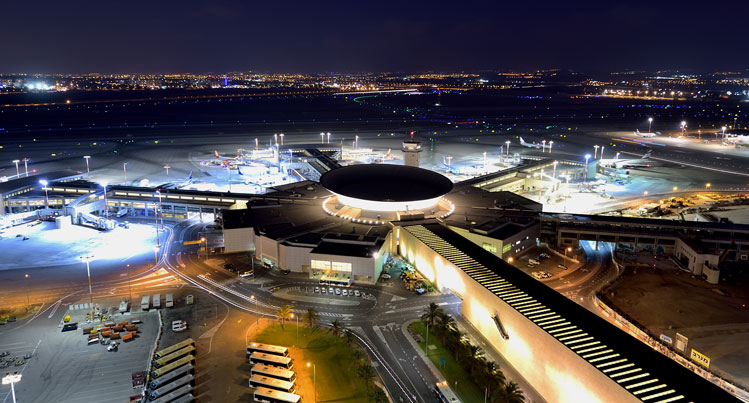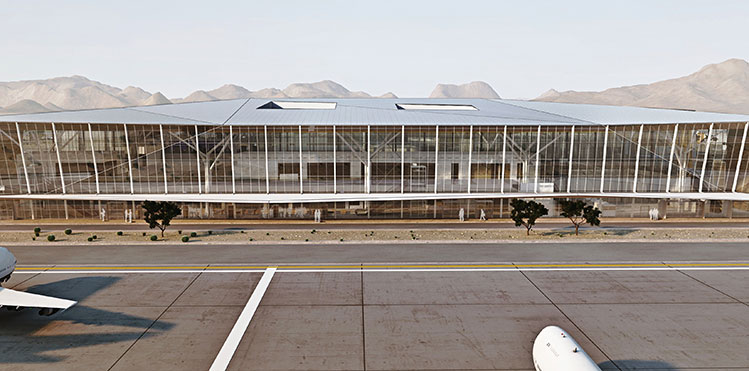Israel Airports Authority is the host of this year’s ACI EUROPE Airport Commercial & Retail Conference & Exhibition. Eliezer Marum, Chairman of the Board of Directors, and Yoram Shapira, Deputy Director General Department of Commerce and Business Development, Israel Airports Authority, brief Marta Dimitrova on the growth in international traffic since the implementation of the Open Skies policy, as well as the potential of the new Eilat Ilan and Assaf Ramon International Airport to strengthen the economy.

2017 was a record-breaking year when Ben Gurion International Airport marked 18.3% growth on 2016, welcoming over 20 million passengers and 12 new airlines which started operations from the airport
Five years ago, the Open Skies policy opened new horizons for tourism in Israel. The competition between airlines reduced airfares, therefore making Israel an attractive destination for tourists and Israeli passengers. Placed in the centre of three religions – Judaism, Christianity, and Islam – Israel offers a sense of spirituality and diverse culture with main attractions including the holy city of Jerusalem, mineral-rich mud from the Dead Sea, the Galilee, and the beautiful coastline and culinary abundance of Tel Aviv.
Israel Airports Authority (IAA) is an active member of ACI EUROPE and is hosting this year’s ACI EUROPE Airport Commercial & Retail Conference & Exhibition.
“We are excited to host this highly valued conference in Tel Aviv. It will enable us to present the recent developments and the changes implemented to meet the challenges facing our industry,” enthuses Eliezer Marum, Chairman of the Board of Directors, Israel Airports Authority.
18.3% passenger growth in 2017

Eliezer Marum, Chairman of the Board of Directors, Israel Airports Authority: “According to the master plan and the airport programme, we expect that the new Eilat Ilan and Assaf Ramon International Airport will support local employment in the region, and increase the operation of low-cost carriers for Europe and the Far East, thus resulting in more competition and lower airfares for passengers.”
The Open Skies agreement, indeed, brought a surge of international traffic for Israel’s main airport Ben Gurion International Airport. “The 50% growth over the last five years has been beyond our forecast for international traffic,” says Marum.
2017 was a record-breaking year when the airport marked 18.3% growth on 2016, welcoming over 20 million passengers and 12 new airlines which started operations from the airport, including WOW air, Cobalt, Cyprus Airways, and new routes from Wizz Air, Ryanair, LOT Polish and more. The traffic forecast for 2018 is expected to pass 23 million passengers, flying with over 140 airlines to 200 destinations worldwide.
This rapid growth in passenger numbers has resulted in a major change in the airport’s commercial activity. Yoram Shapira, Deputy Director General Department of Commerce and Business Development, who is speaking in the ACI EUROPE Airport Commercial & Retail Conference, comments: “The commercial activity at Ben Gurion Airport is set according to rising international passenger figures, the change in passenger mix, and other economic variables all influencing customer behaviour, such as regulatory changes (tax decrease, customs boundaries, Ministry of Health restrictions, for instance cigarettes) and changes in the local retail market including e-commerce.”
In order to meet the challenges created by these changing trends, IAA is shifting its focus from more traditional commercial operations to develop new areas of revenue and strengthening its present commercial areas.
“We constantly analyse the new consumer characteristics and provide the proper response to passengers’ needs and expectations. Currently, we are developing a new mobile application for pre-order, e-commerce for order from home prior to arrival, food & beverage variety, and also we are looking to respond to the business passengers’ needs.”
Overall, annual commercial revenues across IAA’s airports represent 47-48% of the total income. Marum adds: “Commercial revenues and income are of major importance to IAA, as income from fees and charges is not sufficient to cover all IAA expenses for the operation and development of infrastructure and services at our airports and land border crossings.”
Moreover, Israel, known as the “start-up nation”, provides the perfect platform for innovation and development of the latest state-of-the-art technology. “Ben Gurion Airport has a longstanding reputation in the fields of security, operations and commercial management. We have installed many technologies to maintain a high level of aviation safety, while increasing the airport’s aviation traffic capacity. This enables the airport management to maintain a high level of service for passengers and an improved passenger experience, while providing high level security.”
New Eilat Ilan and Assaf Ramon International Airport “a unique national project”

The new Eilat Ilan and Assaf Ramon International Airport terminal building has been designed using materials which reflect the natural beauty of the Timna Valley where the airport is located.
IAA describes the new Eilat Ilan and Assaf Ramon International Airport, set to open later this year, as “a unique national project” due to it being the first domestic/international airport in Israel to be planned and constructed from top to bottom. Also known as Ramon Airport, it is expected to spark a 300% increase in tourism to southern Israel with an anticipated 1.4 million domestic passengers and 400,000 on international flights.

Yoram Shapira, Deputy Director General Department of Commerce and Business Development, Israel Airports Authority, will speak in this year’s ACI EUROPE Airport Commercial & Retail Conference, in a session entitled “Commercial influences of the host airport: Israel’s economy is famously split in two: “tech & tourism – and then all the rest.”
Replacing the two existing airports in Eilat, Eilat City and Ovda, Ramon Airport will serve as the new international gateway to southern Israel and the Red Sea. Its terminal building has been designed using materials which reflect the natural beauty of the Timna Valley where the airport is located.
Last year, JR/Duty Free secured a 10-year duty free contract at the new airport, while IAA is also considering the opening of a commercial centre outside the terminal building.
Airlines expected to operate at the new airport include those currently serving. Ovda Airport, including Ryanair, Wizz Air, easyJet, Transavia, SAS, Finnair, and Ural Airlines, as well as airlines operating at Eilat City Airport.
Meanwhile, the new Ramon Airport has been built according to the Israeli Standard for Green Building 5281 and it has the ISO 14001:2015 Environmental Management Systems Accreditation. Marum says: “As the airport was built in the desert at the Timna Valley, several actions were taken prior to construction – keeping and preserving the local seeds, flowers and unique small animals. After the construction is completed the seeds and flowers will be planted again in the area to keep the nature environment. In the airport area, a solar farm will be built to provide energy to the airport.”
The past five years have been revolutionary for Israel and 2018 is no exception. For the first time, Israel will operate two international airports after the completion of Eilat Ilan and Assaf Ramon International Airport. Looking ahead, Marum concludes: “According to the master plan and the airport programme, we expect that the new Eilat Ilan and Assaf Ramon International Airport will support local employment in the region, and increase the operation of low-cost carriers for Europe and the Far East, thus resulting in more competition, lower airfares for passengers and much improved air connectivity for Israel.”







